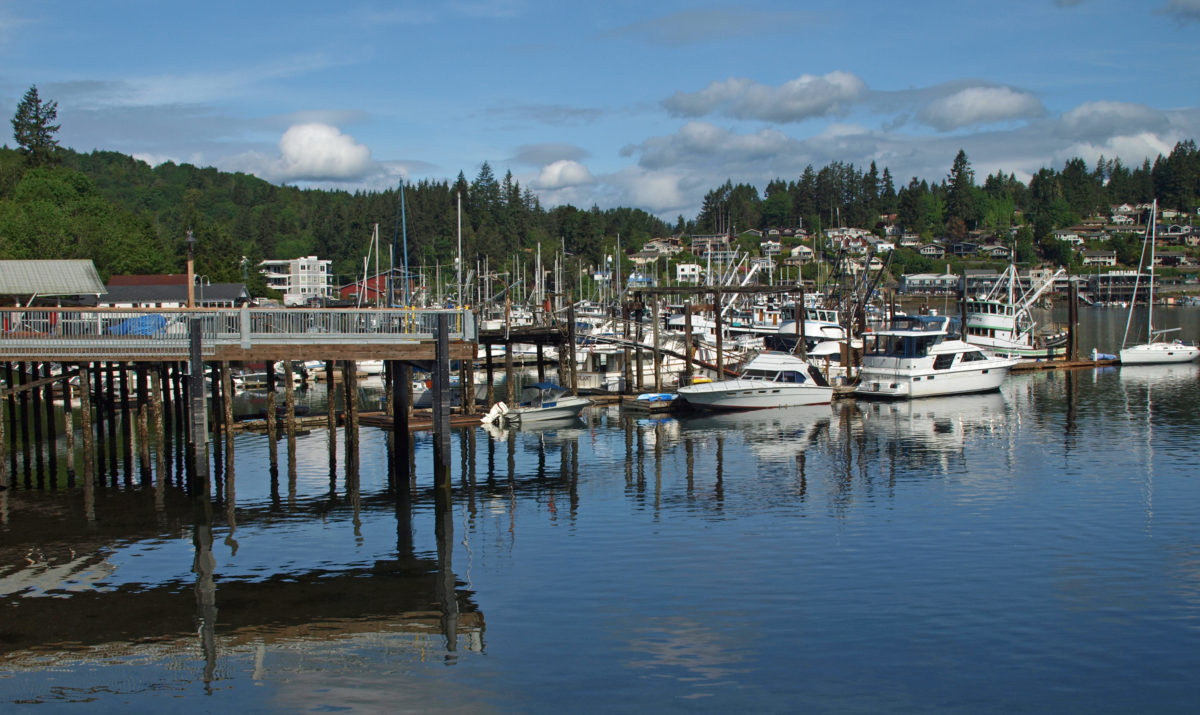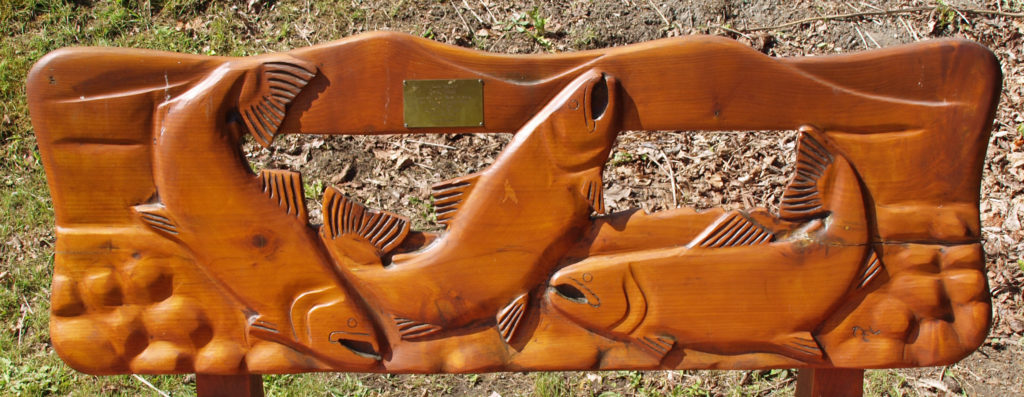 Gig Harbor, Washington is located on Puget Sound near Tacoma. My first visit came only about five years ago. At the time it was one of the few towns on Puget Sound that I had not explored. I had heard testimonials to the town’s charm. And charming it is, at least the historic downtown along the waterfront. Like Poulsbo and other small Puget Sound communities, it is the historic center and waterfront that draws visitors to the town. Away from the waterfront, Gig Harbor is like most other small towns and suburbs in the Puget Sound area – almost certainly a nice place to live, but not much reason to visit. But the historic downtown is most definitely worth visiting. I don’t know why I had never visited before, but my wife and I have returned to Gig Harbor several times since that first visit, and I’m sure we will be back again soon. It has become one of our favorite places in Washington.
Gig Harbor, Washington is located on Puget Sound near Tacoma. My first visit came only about five years ago. At the time it was one of the few towns on Puget Sound that I had not explored. I had heard testimonials to the town’s charm. And charming it is, at least the historic downtown along the waterfront. Like Poulsbo and other small Puget Sound communities, it is the historic center and waterfront that draws visitors to the town. Away from the waterfront, Gig Harbor is like most other small towns and suburbs in the Puget Sound area – almost certainly a nice place to live, but not much reason to visit. But the historic downtown is most definitely worth visiting. I don’t know why I had never visited before, but my wife and I have returned to Gig Harbor several times since that first visit, and I’m sure we will be back again soon. It has become one of our favorite places in Washington.
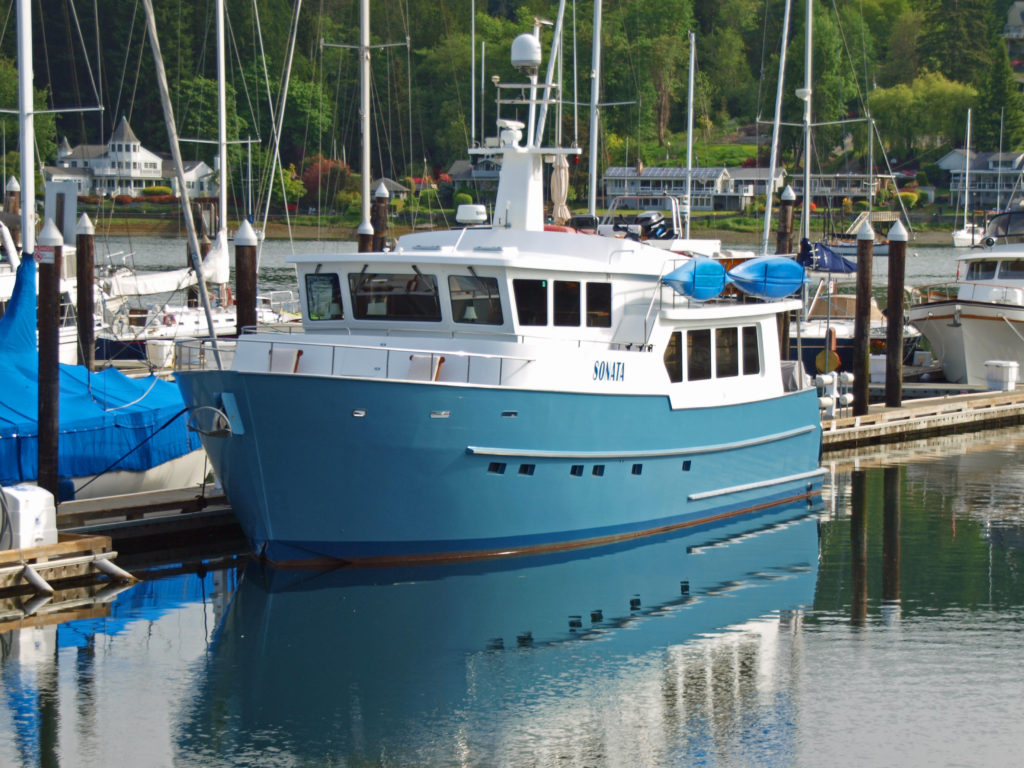
Once a small fishing village, Gig Harbor is now a bedroom community of nearby Tacoma. In the 1950s and 60s, new development in the area began to threaten the historic character of the area as the town developed after the Tacoma Narrows Bridge was built. However, city leaders steered most of the new development away from the harbor area. Today, Gig Harbor’s waterfront is an attractive and charming commercial district that blends modern aesthetics with the area’s historic and cultural heritage.
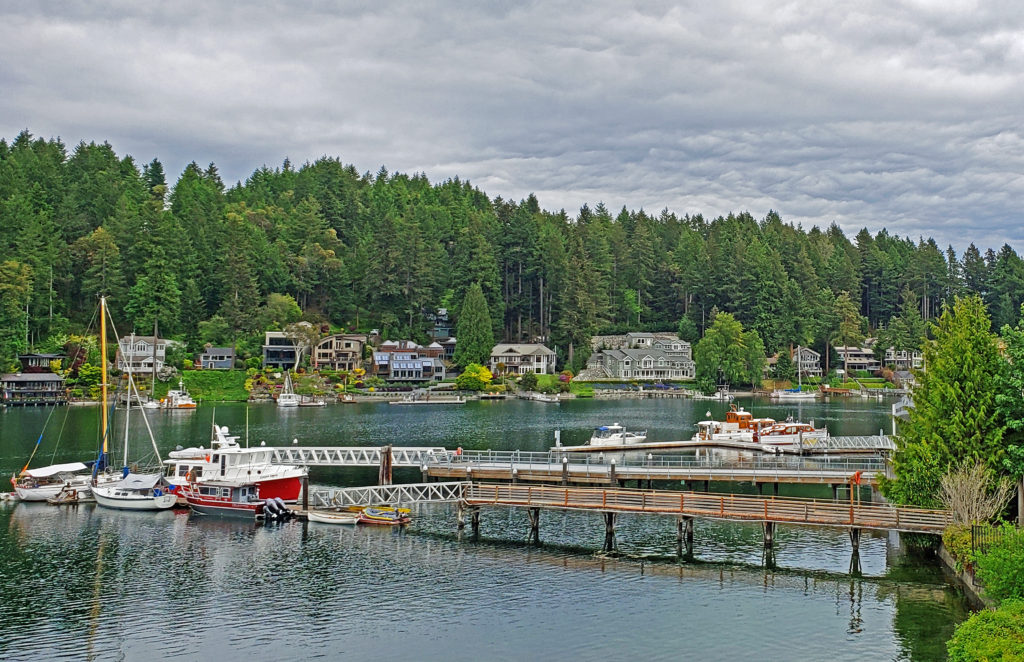
The history of Gig Harbor dates back to 1840, when Captain Charles Wilkes steered his “captain’s gig” into the sheltered bay during a heavy storm. The following year he published a map of the Oregon Territory, naming the bay Gig Harbor.
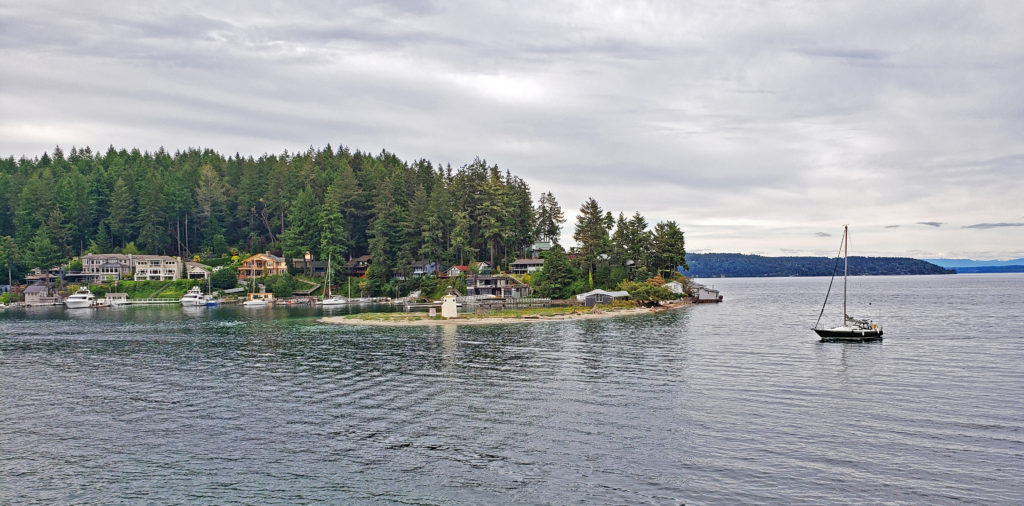
The Gig Harbor area was settled after the Civil War by Scandinavian and Croatian immigrants. In addition to commercial fishing, boat building and logging were also important components of Gig Harbor’s early economy. Among the prominent boat builders were the Skansie Brothers, who built the regions first gasoline powered fishing boat in 1905. The Skansie Netshed and House, home of Andrew and Bertha Skansie, is on the National Register of Historic Places.

When you arrive in Gig Harbor, park your car downtown (parking is free, but you need to get there early on summer weekends), and take a walk along the waterfront. The Skansie Netshed and House is located in Skansie Brothers Park. Maritime Pier, Jersich Dock, Ancich Park, and Eddon Boat Park are other spots where you can access the waterfront.
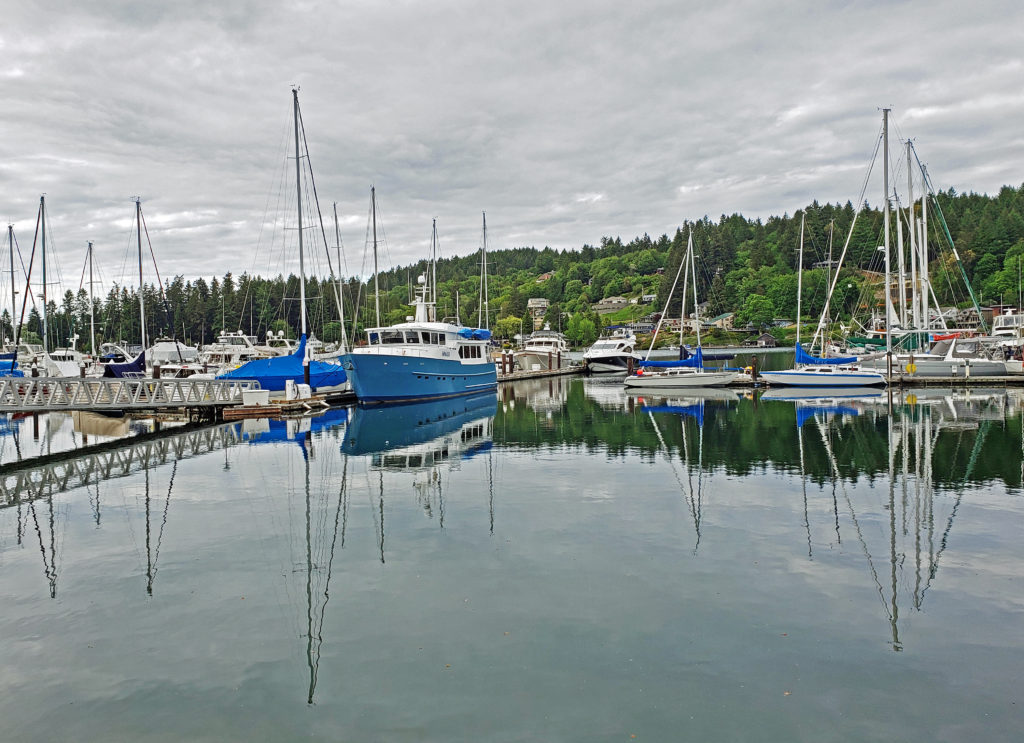
At the head of the bay, check out the Harbor History Museum. You can learn much more about the history and heritage of the Gig Harbor area there and see the Shenandoah, a 65-foot wooden purse-seiner built in 1925, that is being restored at the museum.
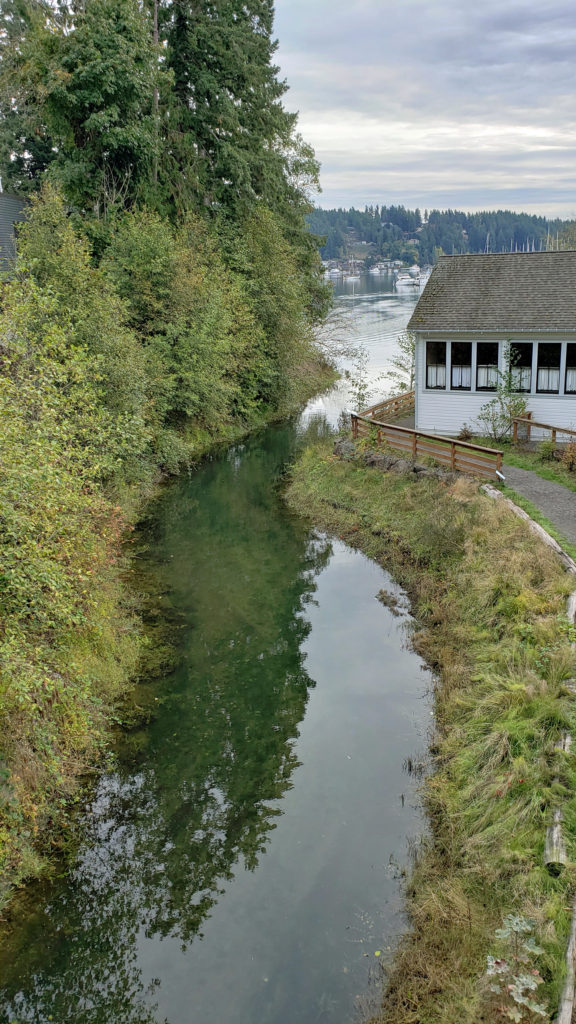
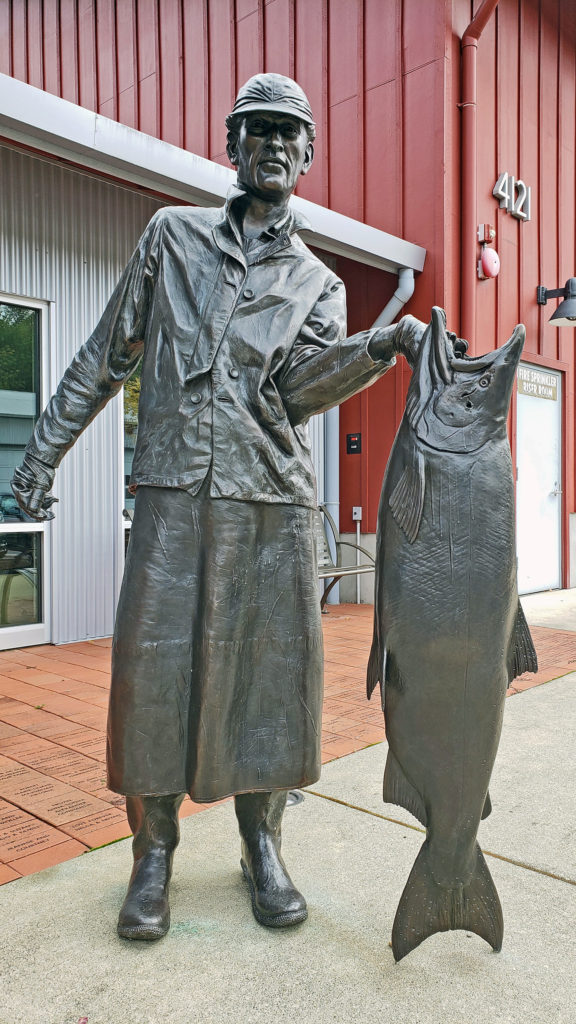 The museum is located where Donkey Creek flows into the harbor, and when the salmon are spawning you can watch them swimming upstream from viewing platforms in Donkey Creek Park, across Harborview Drive from the museum.
The museum is located where Donkey Creek flows into the harbor, and when the salmon are spawning you can watch them swimming upstream from viewing platforms in Donkey Creek Park, across Harborview Drive from the museum.
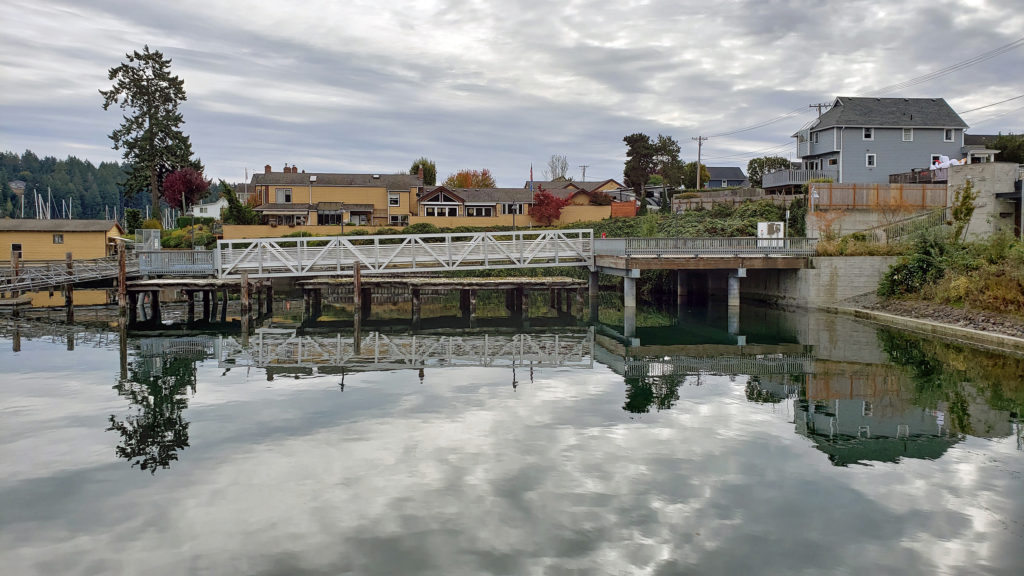 Tourism is more important than fishing to Gig Harbor’s economy today, but a small fishing fleet still exists and is still important to the cultural identity of the town. On the first weekend of June each year, during the Maritime Gig Festival, the fleet gathers in the bay for a Blessing of the Fleet ceremony.
Tourism is more important than fishing to Gig Harbor’s economy today, but a small fishing fleet still exists and is still important to the cultural identity of the town. On the first weekend of June each year, during the Maritime Gig Festival, the fleet gathers in the bay for a Blessing of the Fleet ceremony.
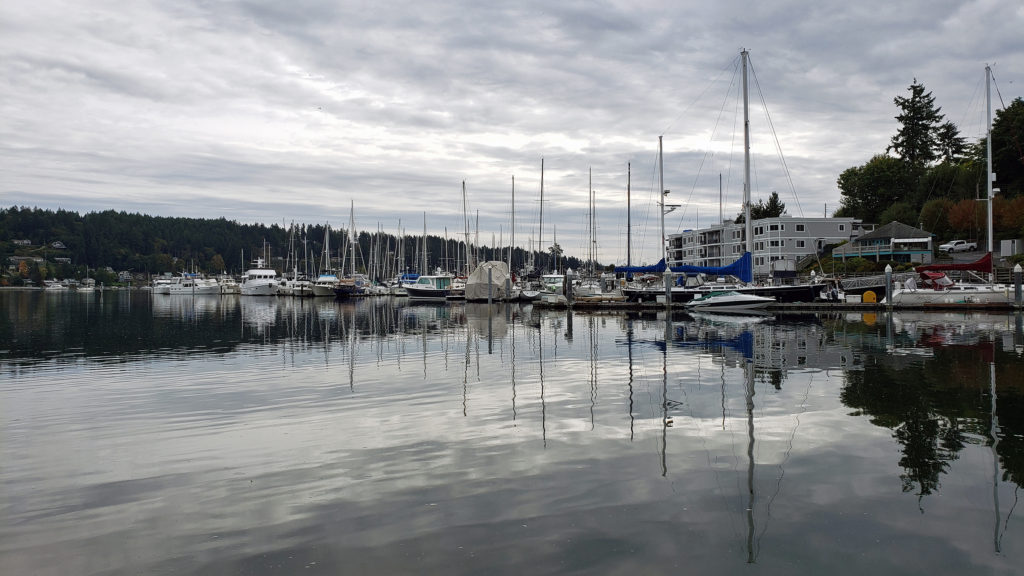 Getting out on the water is both great fun and a way to view the waterfront from a different perspective. You can rent kayaks, stand-up paddle boards, and electric boats at Gig Harbor Boat Rentals, if you’re so inclined.
Getting out on the water is both great fun and a way to view the waterfront from a different perspective. You can rent kayaks, stand-up paddle boards, and electric boats at Gig Harbor Boat Rentals, if you’re so inclined.
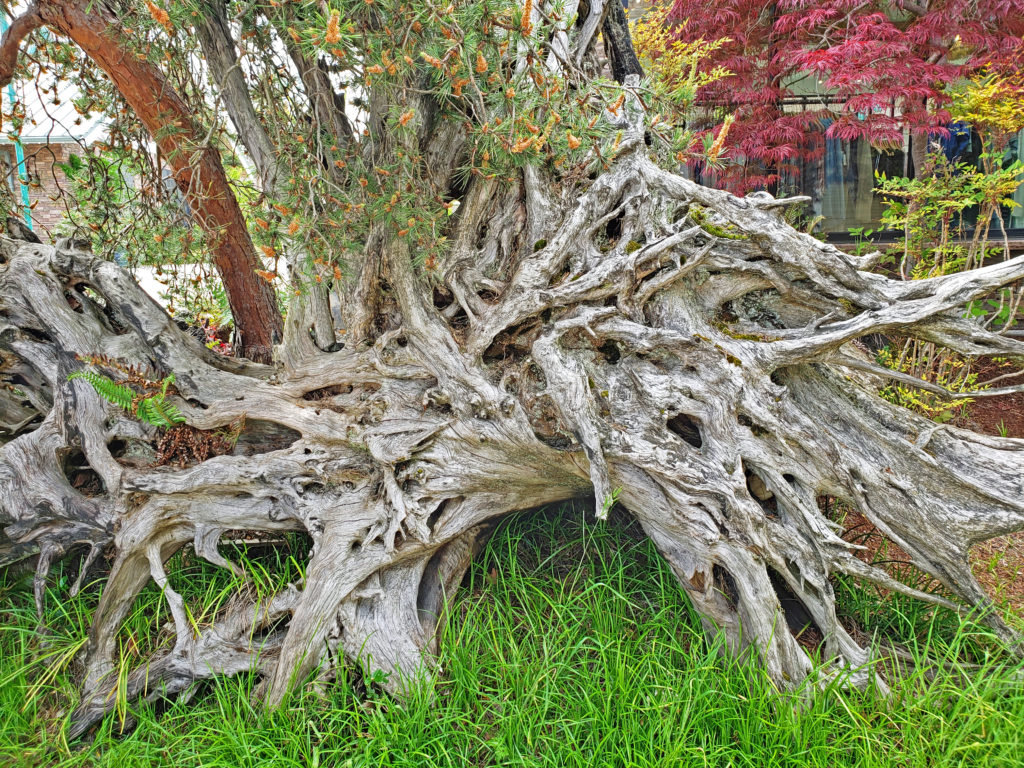 If you’re thinking about paying Gig Harbor a visit, a good place to start is the Gig Harbor Guide. It offers useful information on the history of the town, accommodations and dining options, and a detailed calendar of events.
If you’re thinking about paying Gig Harbor a visit, a good place to start is the Gig Harbor Guide. It offers useful information on the history of the town, accommodations and dining options, and a detailed calendar of events.
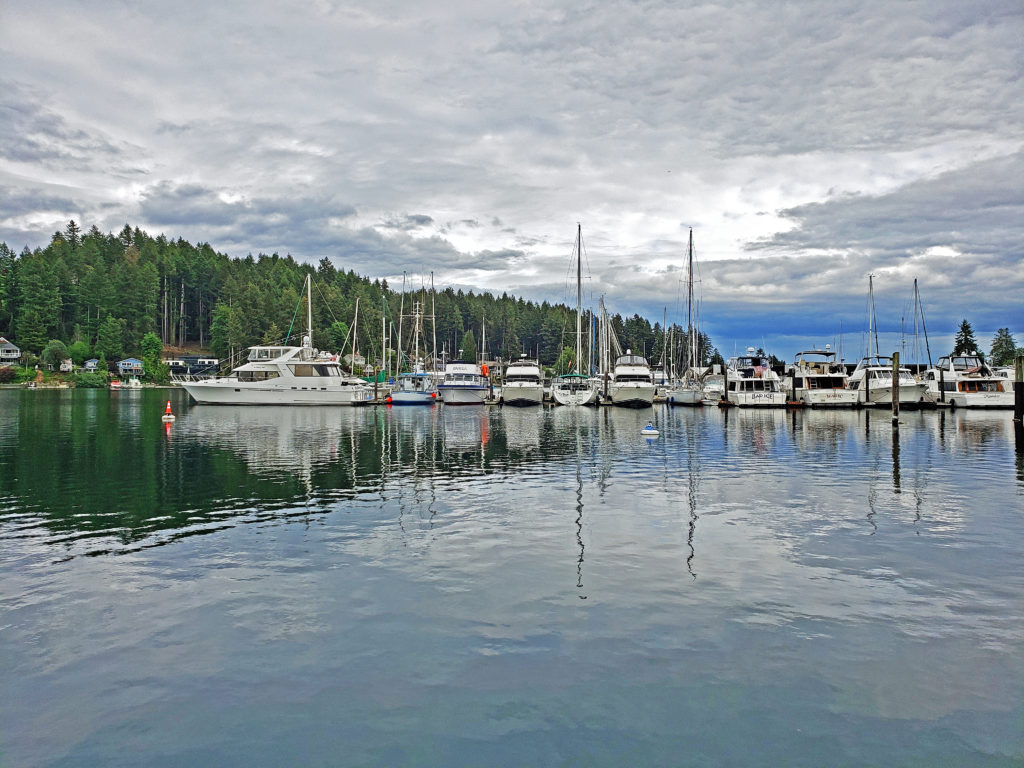
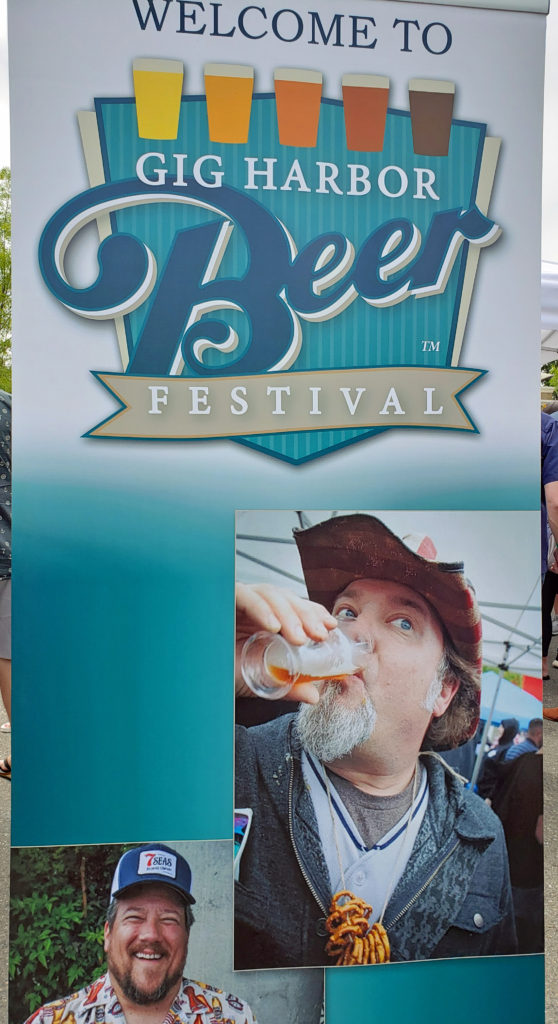 My wife and I timed our first visit to coincide with the Gig Harbor Beer Festival. We’re from Beervana (also known as Portland), after all, and we frequently seek out new opportunities to sample craft beers that we’ve not tried before. Gig Harbor has four craft breweries: Gig Harbor Brewing, 7 Seas Brewing, Wet Coast Brewing, and Dunagan Brewing. We sampled beers from all but Dunagan at the beer festival, and we both found a number of beers to our liking, even though we have very different tastes in beer. Gig Harbor Brewing and 7 Seas Brewing have taprooms located on the waterfront in Gig Harbor. Wet Coast has a taproom just off Hwy 16 in the newer part of Gig Harbor. And Dunagan’s Irish Pub and Brewery is located about a mile south of Wet Coast, also just off Hwy 16. Of the four, only Dunagan’s serves food. If you want to eat as well as drink, try the Tides Tavern or one of the other establishments listed in the Gig Harbor Guide.
My wife and I timed our first visit to coincide with the Gig Harbor Beer Festival. We’re from Beervana (also known as Portland), after all, and we frequently seek out new opportunities to sample craft beers that we’ve not tried before. Gig Harbor has four craft breweries: Gig Harbor Brewing, 7 Seas Brewing, Wet Coast Brewing, and Dunagan Brewing. We sampled beers from all but Dunagan at the beer festival, and we both found a number of beers to our liking, even though we have very different tastes in beer. Gig Harbor Brewing and 7 Seas Brewing have taprooms located on the waterfront in Gig Harbor. Wet Coast has a taproom just off Hwy 16 in the newer part of Gig Harbor. And Dunagan’s Irish Pub and Brewery is located about a mile south of Wet Coast, also just off Hwy 16. Of the four, only Dunagan’s serves food. If you want to eat as well as drink, try the Tides Tavern or one of the other establishments listed in the Gig Harbor Guide.
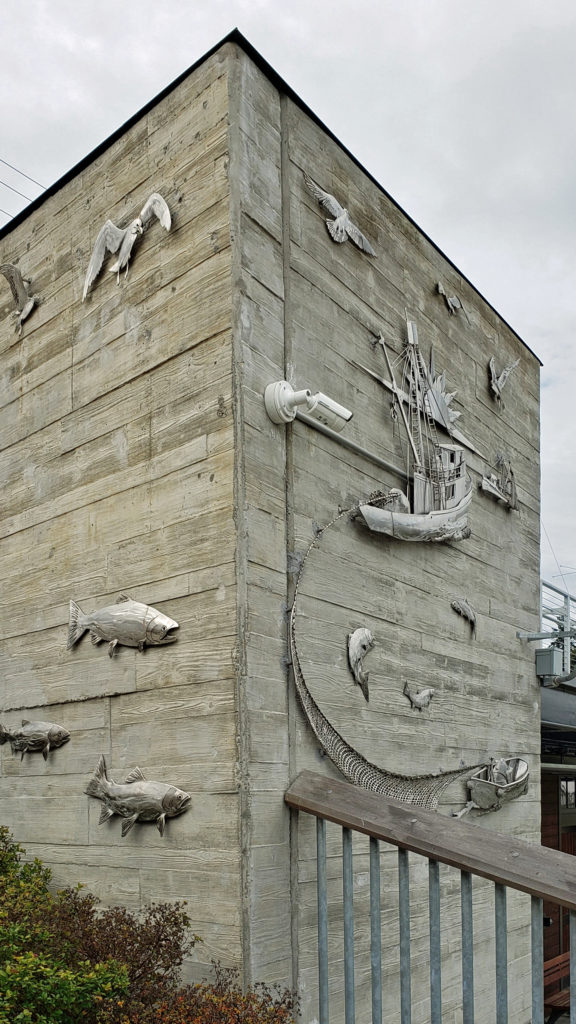 One restaurant that you should not miss is Netshed No. 9. Breakfast there was so good that we came back the next morning. And it has become our go to spot for breakfast when we’re in Gig Harbor. Try their triple berry whipped ricotta French toast. It might be the best French toast I’ve ever had. Netshed No. 9 is not open for dinner, but the same owners operate Brix 25°, located next door. We didn’t eat there, so I can’t vouch for it personally, but I have no doubt that it offers the same quality dining experience. One dinner place that we did eat at is Il Lucano, a very fine, authentic Italian restaurant a few blocks off the waterfront. Another place that I can recommend is Millville Pizza, on the waterfront. They serve artisanal wood fired pizzas, appetizers and homemade desserts. In my opinion, Millville is one of the best pizza places in the Northwest.
One restaurant that you should not miss is Netshed No. 9. Breakfast there was so good that we came back the next morning. And it has become our go to spot for breakfast when we’re in Gig Harbor. Try their triple berry whipped ricotta French toast. It might be the best French toast I’ve ever had. Netshed No. 9 is not open for dinner, but the same owners operate Brix 25°, located next door. We didn’t eat there, so I can’t vouch for it personally, but I have no doubt that it offers the same quality dining experience. One dinner place that we did eat at is Il Lucano, a very fine, authentic Italian restaurant a few blocks off the waterfront. Another place that I can recommend is Millville Pizza, on the waterfront. They serve artisanal wood fired pizzas, appetizers and homemade desserts. In my opinion, Millville is one of the best pizza places in the Northwest.
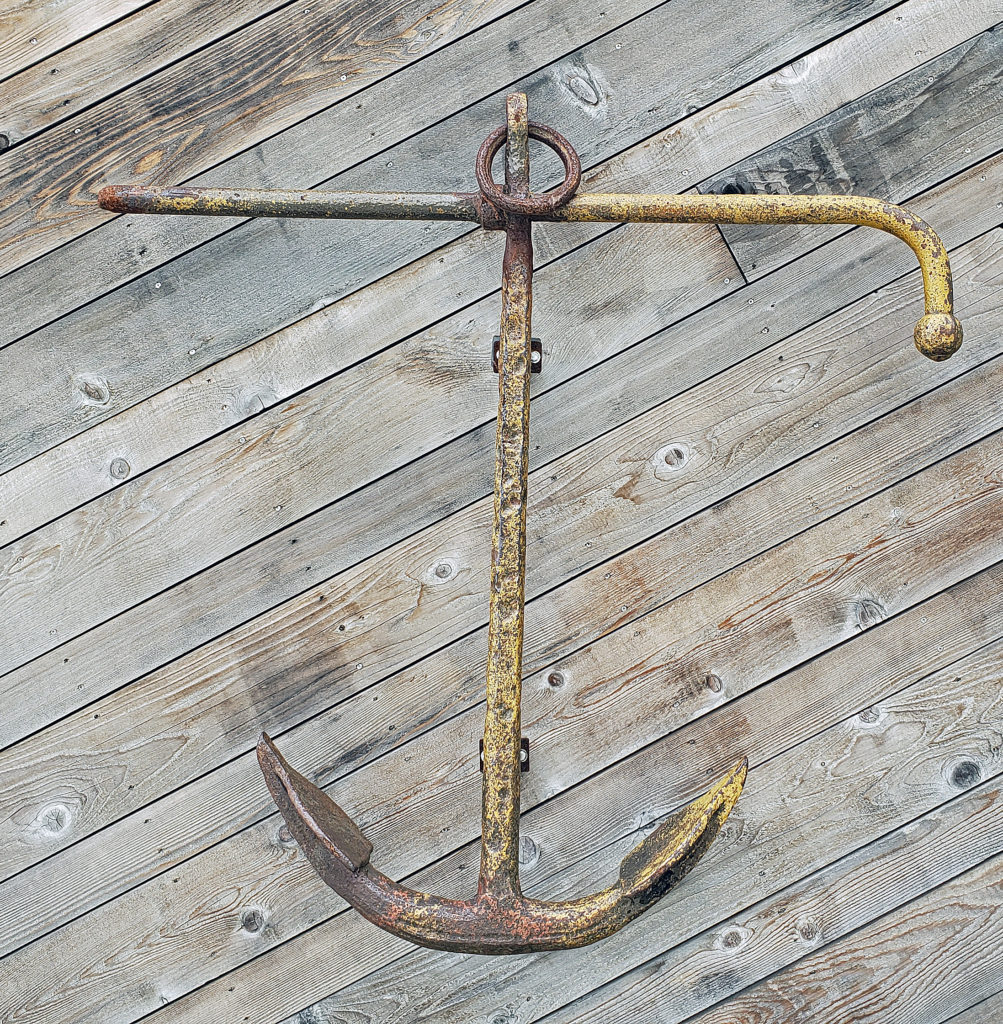
Today, many of Gig Harbor’s roughly 10,000 inhabitants commute to Tacoma across the Tacoma Narrows Bridge. The first bridge was built in 1940, but due to a design flaw, it proved to be vulnerable to cross winds. Nicknamed “Galloping Gertie,” it collapsed in a relatively minor windstorm only a few months after it was completed. It wasn’t until 1950 that a replacement bridge was built.
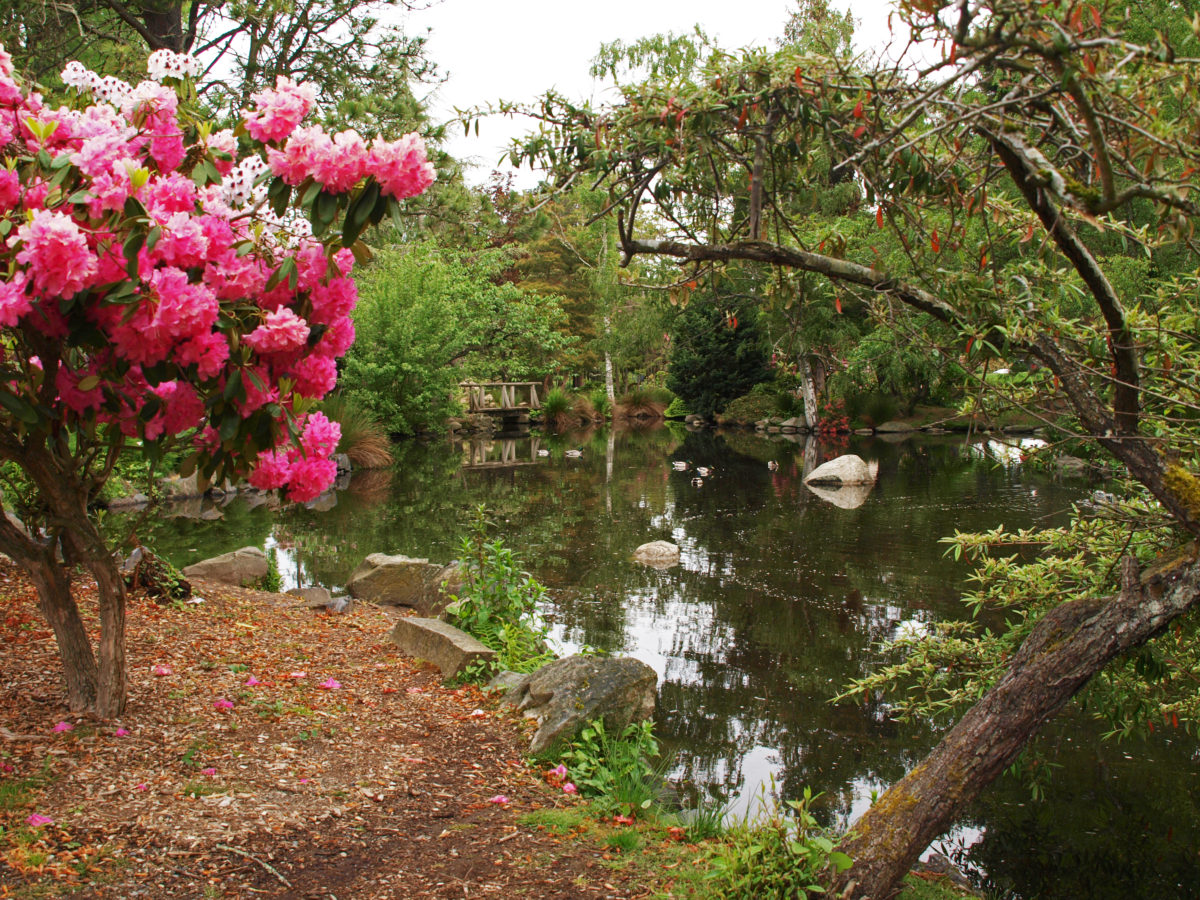
Once known mostly for the “Tacoma Aroma” produced by the polluted tide flats of Commencement Bay, a pulp and paper mill, a rendering plant, and an oil refinery, Tacoma has experienced a cultural, environmental, and artistic renaissance in recent decades. Industrial areas, like the old Dickman Mill site (now a city park), have been reclaimed and remediated. And the Tacoma Aroma is no more, thanks to modern environmental regulations. Today, the city has a vibrant arts scene, highlighted by the Museum of Glass and the Tacoma Art Museum in the Museum District. The city also has many beautiful parks. The 760-acre Point Defiance Park features a zoo, an aquarium, several botanical gardens, hundreds of acres of forest, and miles of Puget Sound waterfront. So, consider adding a visit to Tacoma to your itinerary when you come to Gig Harbor. But regardless of whether or not you choose to visit Tacoma, Gig Harbor should definitely be on your radar, if it’s not already. It’s an interesting, historical, and beautiful town with a lot of things to see and do.

Originally posted August 29, 2019 by Alan K. Lee. Most recent update December 9, 2023.
All photos © Alan K. Lee

